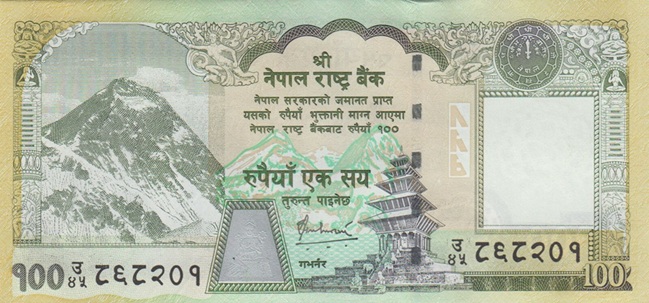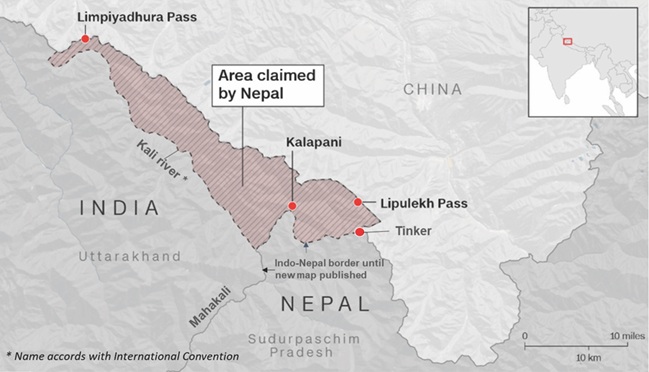Prelims: (Geography + CA)
Mains: (GS 2 – International Relations) |
Why in the News ?
Nepal has issued a new NPR 100 banknote featuring its amended national map, which includes the disputed territories of Kalapani, Lipulekh, and Limpiyadhura. The redesigned note has already entered circulation. This move is seen as a symbolic assertion of Nepal’s territorial claim and has drawn strong objections from India.

About the New NPR 100 Banknote
- Displays the updated political map of Nepal (amended constitutionally in May 2020).
- Map includes Kalapani, Lipulekh, and Limpiyadhura, currently disputed between India and Nepal.
- The note maintains its earlier size and colour.
- Design features:
- Mount Everest on the left
- Rhododendron watermark on the right
- Updated map at the centre
- Braille dot for visually impaired users
- Enhanced security details such as a colour-shifting security thread
Which Cities/Areas Are Marked on the New Map ?
- Following the 2020 constitutional amendment, Nepal incorporated:
- Kalapani
- Lipulekh
- Limpiyadhura
Nepal’s claim is based on the interpretation that the Kali River’s origin lies at Limpiyadhura, making these regions part of Nepalese sovereign territory.
India disputes this, citing historical records and treaty-based agreements, especially those dating back to the 1816 Treaty of Sugauli.
India’s Response
- India has rejected Nepal’s depiction of disputed areas on the note.
- New Delhi described the map as a unilateral, artificial expansion of claims.
- India reiterated that such moves do not alter existing territorial realities.
- India considers these territories integral parts of the Indian state of Uttarakhand.
Additional Features on the New NPR 100 Note
Along with the revised map, the note features:
- Maya Devi in silver ink within an oval frame
- Signature of former Nepal Rastra Bank governor Maha Prasad Adhikari
- Series number “2081” (in Nepali numerals)
- A one-horned rhinoceros with its calf
- New tactile marks for visually impaired individuals
Implications for India–Nepal Relations
- The map on a circulating currency note serves as a symbolic assertion of sovereignty by Nepal.
- This move may further strain bilateral relations, which were already under tension since the 2020 map revision.
- Diplomatic negotiations over border demarcation may become more complex.
- Public sentiment in both countries—especially around nationalism—may intensify.
- Residents living in border districts may face difficulties in transactions if Indian traders refuse to accept the new note.
Impact on Trade & Everyday Life
- Cross-border trade may be affected, especially in areas close to the disputed territory.
- Traders along the India–Nepal border have expressed reluctance to accept the new currency, citing political sensitivities.
- Could impact day-to-day transactions, remittances, and informal trade flows.
- Symbolic actions like this could escalate demands for political engagement and boundary settlement discussions.
Nepal–India Border Dispute: Context

- The dispute centres on the origin of the Kali River, which determines ownership of the Kalapani region.
- Nepal claims the river begins at Limpiyadhura, while India places the origin further south.
- The contested territories lie strategically near the tri-junction of India–Nepal–China.
FAQs
1. Why did Nepal redesign the NPR 100 note ?
To incorporate its updated political map, including the disputed territories of Kalapani, Lipulekh, and Limpiyadhura.
2. How has India responded ?
India has rejected the map as unilateral and stated that it does not alter existing territorial realities.
3. What new features appear on the note ?
Maya Devi artwork, Braille markings, colour-shifting thread, new serial number, and enhanced security features.
4. Why are these areas disputed ?
Both countries differ on the origin point of the Kali River, which determines the boundary under the Treaty of Sugauli (1816).
5. Will the new note affect trade ?
Yes, especially in border regions where traders may refuse to accept the currency due to the political controversy.
|



